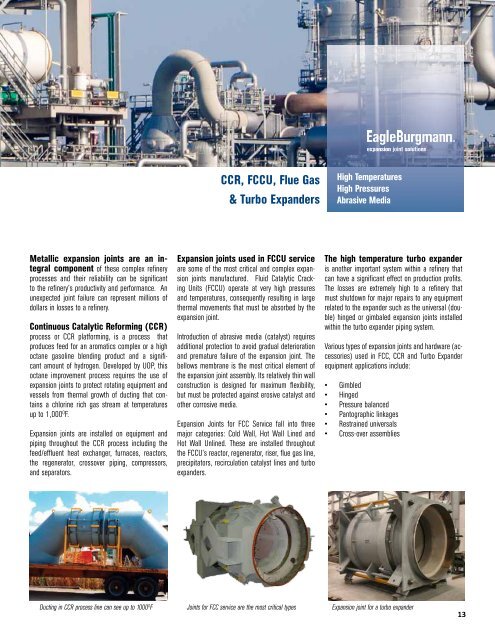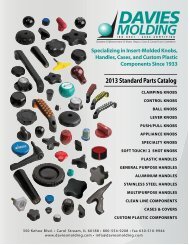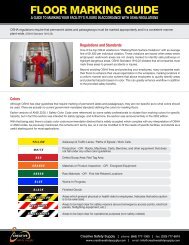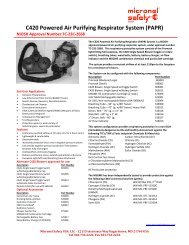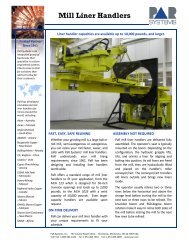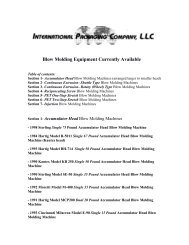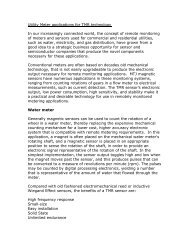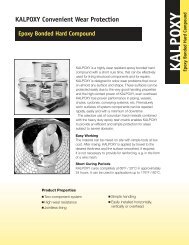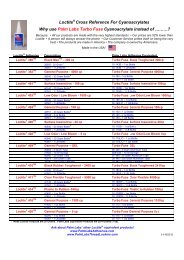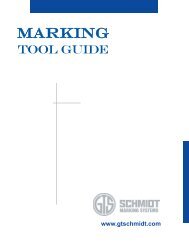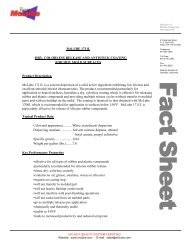Metal Expansion Joints - ThomasNet
Metal Expansion Joints - ThomasNet
Metal Expansion Joints - ThomasNet
You also want an ePaper? Increase the reach of your titles
YUMPU automatically turns print PDFs into web optimized ePapers that Google loves.
<strong>Metal</strong>lic expansion joints are an integral<br />
component of these complex refinery<br />
processes and their reliability can be significant<br />
to the refinery’s productivity and performance. An<br />
unexpected joint failure can represent millions of<br />
dollars in losses to a refinery.<br />
Continuous Catalytic Reforming (CCR)<br />
process or CCR platforming, is a process that<br />
produces feed for an aromatics complex or a high<br />
octane gasoline blending product and a significant<br />
amount of hydrogen. Developed by UOP, this<br />
octane improvement process requires the use of<br />
expansion joints to protect rotating equipment and<br />
vessels from thermal growth of ducting that contains<br />
a chlorine rich gas stream at temperatures<br />
up to 1,000 O F.<br />
<strong>Expansion</strong> joints are installed on equipment and<br />
piping throughout the CCR process including the<br />
feed/effluent heat exchanger, furnaces, reactors,<br />
the regenerator, crossover piping, compressors,<br />
and separators.<br />
CCR, FCCU, Flue Gas<br />
& Turbo Expanders<br />
<strong>Expansion</strong> joints used in FCCU service<br />
are some of the most critical and complex expansion<br />
joints manufactured. Fluid Catalytic Cracking<br />
Units (FCCU) operate at very high pressures<br />
and temperatures, consequently resulting in large<br />
thermal movements that must be absorbed by the<br />
expansion joint.<br />
Introduction of abrasive media (catalyst) requires<br />
additional protection to avoid gradual deterioration<br />
and premature failure of the expansion joint. The<br />
bellows membrane is the most critical element of<br />
the expansion joint assembly. Its relatively thin wall<br />
construction is designed for maximum flexibility,<br />
but must be protected against erosive catalyst and<br />
other corrosive media.<br />
<strong>Expansion</strong> <strong>Joints</strong> for FCC Service fall into three<br />
major categories: Cold Wall, Hot Wall Lined and<br />
Hot Wall Unlined. These are installed throughout<br />
the FCCU’s reactor, regenerator, riser, flue gas line,<br />
precipitators, recirculation catalyst lines and turbo<br />
expanders.<br />
High Temperatures<br />
High Pressures<br />
Abrasive Media<br />
The high temperature turbo expander<br />
is another important system within a refinery that<br />
can have a significant effect on production profits.<br />
The losses are extremely high to a refinery that<br />
must shutdown for major repairs to any equipment<br />
related to the expander such as the universal (double)<br />
hinged or gimbaled expansion joints installed<br />
within the turbo expander piping system.<br />
Various types of expansion joints and hardware (accessories)<br />
used in FCC, CCR and Turbo Expander<br />
equipment applications include:<br />
• Gimbled<br />
• Hinged<br />
• Pressure balanced<br />
• Pantographic linkages<br />
• Restrained universals<br />
• Cross-over assemblies<br />
Ducting in CCR process line can see up to 1000 O F <strong>Joints</strong> for FCC service are the most critical types <strong>Expansion</strong> joint for a turbo expander<br />
13


